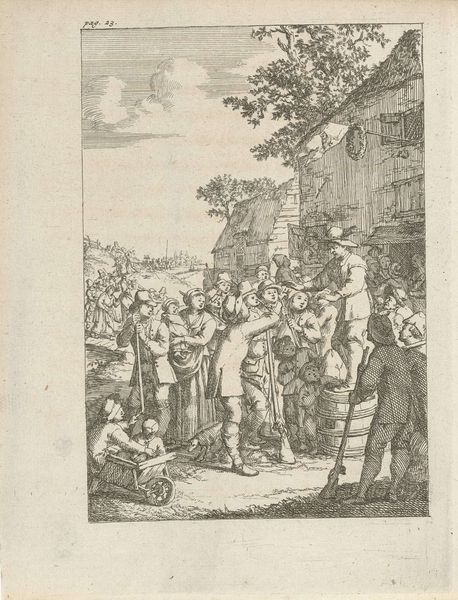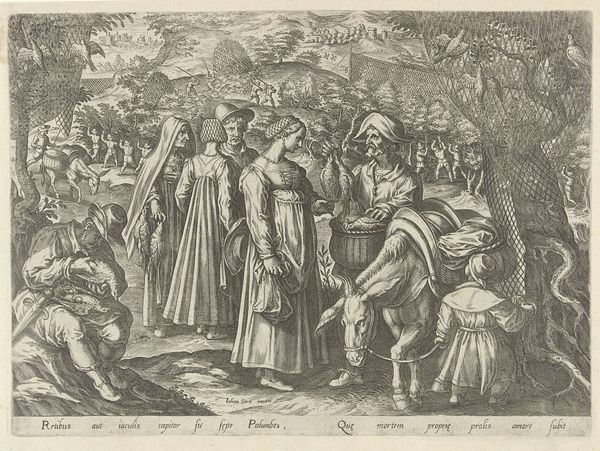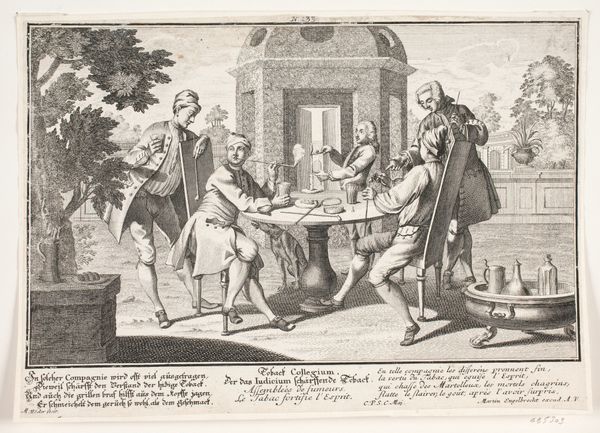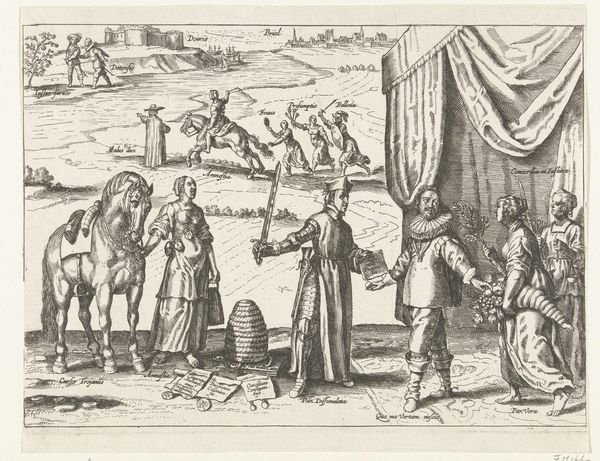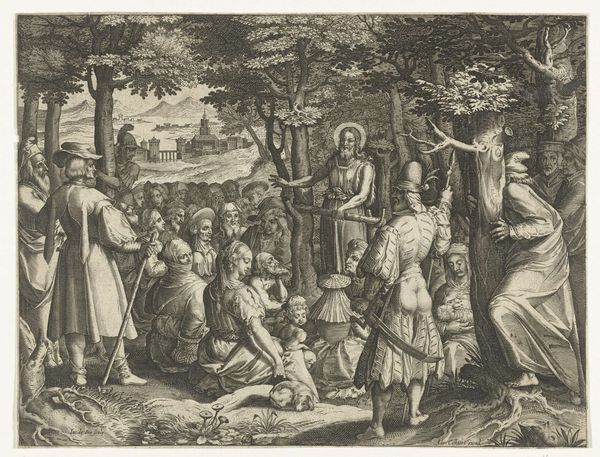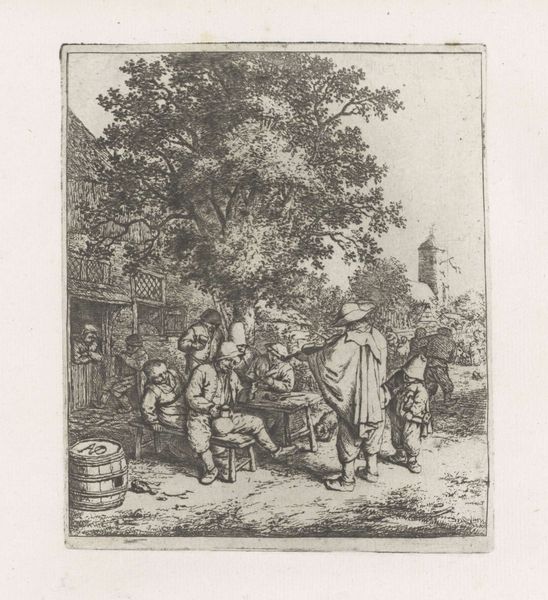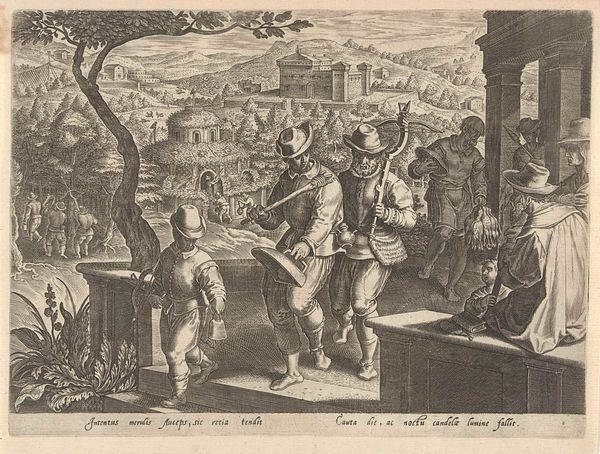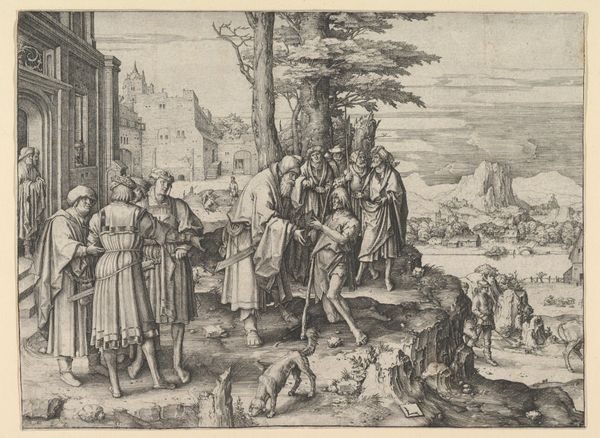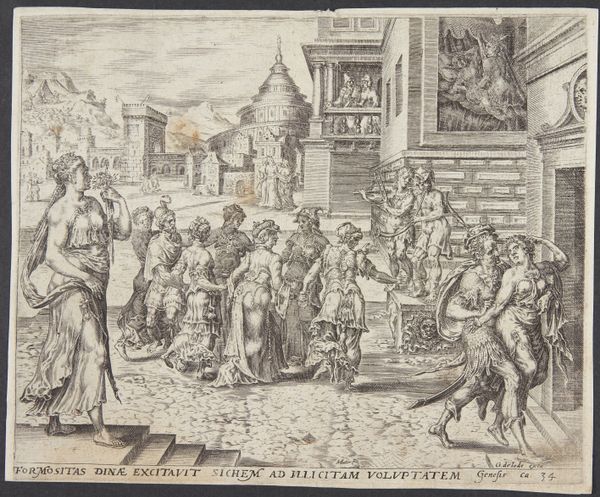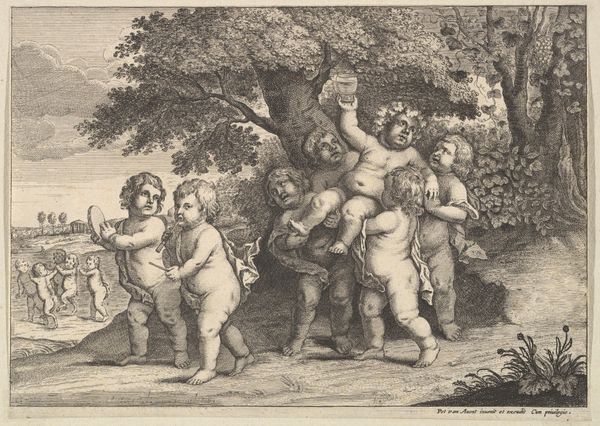
print, etching, engraving
#
narrative-art
#
dutch-golden-age
# print
#
etching
#
genre-painting
#
engraving
Dimensions: height 183 mm, width 239 mm
Copyright: Rijks Museum: Open Domain
Paul van Somer II created this etching, "The Quack," at the end of the 17th century in the Netherlands. It depicts a street scene with a travelling salesman, a "quack," selling dubious medicines to a crowd. The image offers insights into the social history of medicine and commerce. Figures like this were common at fairs and markets, preying on the gullibility and desperation of ordinary people. Somer uses visual cues, like the quack’s exaggerated gestures, to convey his critique. The open display and chaotic scene suggest a lack of regulation. The quack, with his sword, represents someone outside the traditional guild system, relying on charm and deception. To understand the cultural context fully, we would want to explore the rise of market culture in the Dutch Golden Age. Pamphlets and satirical prints of this era reveal a widespread distrust of unregulated trade and a growing awareness of social inequalities. These resources allow us to see the image as a critical commentary, not just a depiction of everyday life.
Comments
No comments
Be the first to comment and join the conversation on the ultimate creative platform.
